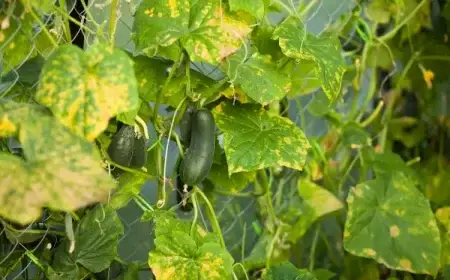Cucumbers are renowned for their ease of cultivation, thriving in greenhouses, open ground, and even on windowsills with minimal care. However, yellowing cucumbers can indicate underlying issues. Here’s a breakdown of the potential reasons behind this problem.
1. Lack of Water
Insufficient water can cause cucumber leaves to turn yellow and wilt. Cucumber plants transpire heavily due to their high water content and rapid growth, making regular watering essential. Deep watering three to four times weekly is typically recommended to ensure adequate hydration. Consider installing a drip irrigation system for consistent moisture, especially during hot weather to prevent leaf wetness.
2. Lack of Light
Cucumbers require at least eight hours of direct sunlight daily to thrive. Without adequate light, they may not produce sufficient chlorophyll, leading to yellowing leaves and stunted growth. If plants appear pale or have smaller-than-normal leaves, insufficient light could be the culprit.
3. Potassium and Magnesium Deficiencies
Deficiencies in potassium and magnesium can also cause cucumber leaves to yellow. Signs of potassium deficiency include yellowing leaves with brown edges and short stems. Adding organic potassium sources like sunflower ash or potassium sulfate can help remedy this issue. Magnesium deficiency manifests as yellowing between leaf veins, progressing to brown patches. Magnesium is crucial for chlorophyll production, affecting overall plant health and growth.
Addressing these potential causes promptly can help restore your cucumber plants to health, ensuring vibrant green foliage and a bountiful harvest. By understanding and mitigating these factors, you can cultivate thriving cucumbers in your garden or greenhouse environment. Happy gardening!




